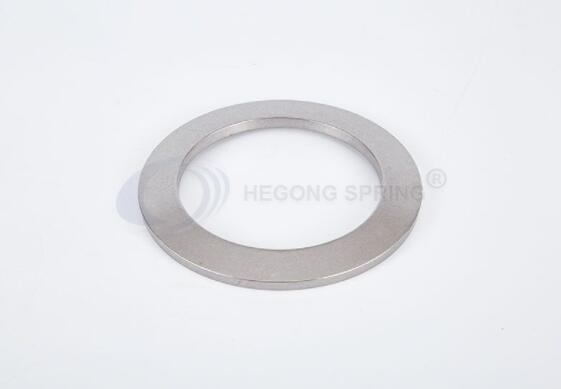Who knew a small, flat rubber ring could be such a versatile and essential tool in home improvement and repair? Small washers work wonders by maintaining a tight seal, preventing leaks, keeping debris out and holding parts in place. These "little plumber's helpers" are essential gadgets for installing and operating faucets, pipes and showerheads.
There are several different types of faucet washers, the most common being flat washers and beveled washers. Both work well, sealing the space between the plumbing and faucet assembly and allowing water to flow fully. Flat washers are standard on all faucets, but beveled washers can be used on worn or uneven fittings.
It is always important to use the manufacturer's recommended parts in faucet installations to ensure optimal performance. However, some faucets may have special parts, or you may need to compensate for excessive wear. Knowing all the properties and uses of each part will help in selecting the best option.

A flat washer is exactly as described: a small disc with a horizontal surface on both sides. Washer sizes can range from ⅛ inch to 1 ⅛ inch. The center opening in the washer allows the bolt to pass through easily and ensures that it remains airtight when the bolt is tightened.
Flat washers function in several components within the faucet assembly. These include the hot and cold water faucets, the aerator and the water supply line directly above. Washers control leaks and regulate water pressure throughout the water line.
Rubber is the most popular material for washers because they do an excellent job of completely shutting off the water flow. Water pressure and general flow do not wear out washers quickly, which makes using a faucet easy. As washers degrade and break, the metal parts inside the faucet wear out due to lack of friction protection.
Beveled washers, also known as hillside washers or tapered washers, are not a standard issue. But just like flat washers, you can use them in many of the same ways when installing a faucet. The correct use of a beveled washer in the right situation can provide the same usable seal.
A beveled washer is a small disc with two different flat surfaces on each side. One side is flat and horizontal, while the other side has a more contoured profile. As a result, the beveled edge is slightly thicker and takes up more space between the areas that are joined together.
Beveled washers, just like their flat counterparts, are available in a variety of different materials. In addition to rubber, you can find them in silicon, nylon, Teflon and various metals. For use in faucets, rubber, silicone and stainless steel work best because they are rust-proof.
Regardless of their type, faucet washers are used as spacers between fasteners to ensure an even, solid fit. Faucet washers help to install good pipe joints, reduce pressure, and minimize the stress of water flow and daily use. They are also important for forming water seals when installing and servicing faucets.
Internally, the washer is pressed downward against the seat or flow valve inside the faucet assembly. Ideally, it will form a closed seal that serves a dual purpose in the home water supply. When the faucet is closed, it will stop the flow of water to the spout and control contaminants flowing through the pipe.
Because of its high durability and flexibility, the washer can also be used as an insulator. Without a washer, the metal internal parts wear faster due to friction and are more prone to corrosion. Installed washers extend the life and condition of the faucet housing, thereby delaying repair or replacement.
Flat washers and beveled washers have the same shape and the same dimensions. In addition, they are both used to cushion the contact surface between two connected parts and to prevent water leakage. However, there are some key differences between the two in appearance and application.
Flat washers are completely horizontal on both sides, while slant washers have a flat side and a contoured side. This contoured surface gives the beveled washer a sloped or conical shape that is not flat and slightly larger than the flat washer. Because of the contour, beveled washers provide a flatter surface and tighter seal for worn or broken faucet rods.
Flat and beveled washers also differ in the way they meet to seal. With flat washers, the all-around flush design seals from the outer edge and center hole. In contrast, beveled washers primarily seal water flow from internal openings, as uneven edges can impede movement.